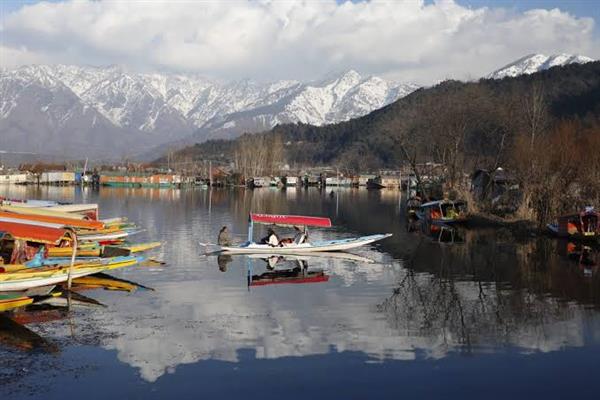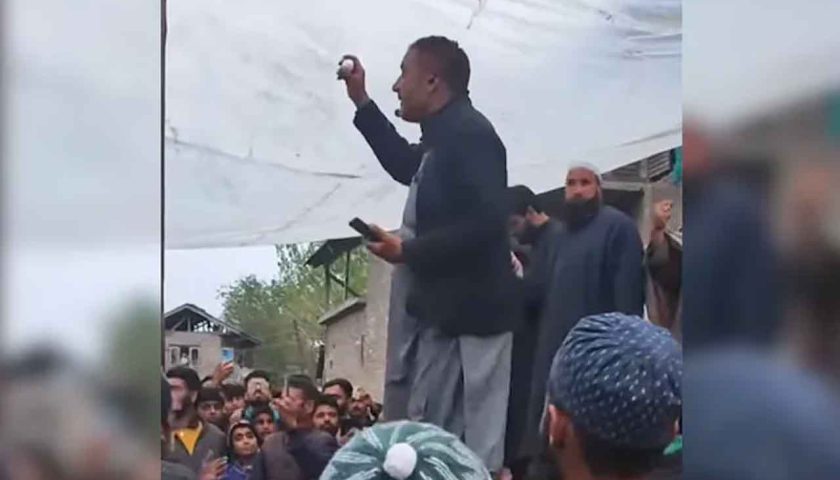Be it a make-believe racecourse drives among cabbies or breakneck street engagements, Kashmir looks angry, in letter and spirit.
The emotion emerges when loud honking, wrong turns and desperate drives derail the street sanity. Maybe, the anger is justified, or an expression of a suppressed emotion, but embittering commuters with a normalized hit-and-run behavior needs some check and balance.
To begin with, there’s no study to map this mess.
Kashmir’s anger problem is not even a work in progress. In the region where mind problems, so to say, is fetching myriad scholarships, the research on rage is yet to take off, notwithstanding the pre-August 2019 volumes long buried in the new order.
With Eid around the corner, a commoner’s anguish stems from the rising heat in the market. “It’s not the same anymore,” expression now defines life in the landlocked landscape. The anger created by this pent-up emotion often leaves streets in a seething state. Fistfights and stabbings as an offshoot of this mindset were never so wild.
But then, the bureaus of data and statistics are quiet over this emotion. People are angry over dog menace, smart meters and poor handling of exams, but that hardly forms a data bank. The absence of record itself triggers this temper.
And then patrolling emotions is another matter of concern. The sense of curated expression now feeds the anger dynamics of the valley. The bygone garrulous have now become taciturn with annoyance added to their personality trait.
Those running shows and creating stunts are now cheerleaders with a cause. Their clowning now breeds an armchair anger.
And if some of them are not clowning, they’re wondering about their lost cults. A few of them are fighting protracted court battles, others are waiting for godot, to reclaim their happy spaces.
But the new order advocates are dismissing this anger as an expression of the lost sway. “They want to play seesaw according to their own rules,” thus the war of words never settles down anger in their combat arena.
For the youth seeking means of survival in the region jinxed with joblessness, the anger comes from an existential anguish. The hiring agencies escalate this emotion by freezing selection lists. It works in rhythm and runs in loop.
This is not to say that the space is sullen and devoid of delight. Some Samaritans are uplifting gloom by arranging mass-marriage of daughters caught in the growing martial crisis. The anger of wedding lock is just another emotion dominating the discourse in the valley.
And once they marry, the anger comes from their derailing domestic order. “She is this, and that,” and thus the vicious circle never stops. Even the dream weddings land in courtrooms and unending crises due to this hysterical emotion.
Kashmir, it seems, needs an anger management to strike some order in streets and social spaces. Naysayers might call this an expression of an angry mind, but the effervescing emotion itself demands redressal of this rage.
Incidents of stares, scuffles, and stabbings that have occurred in Kashmir, exploring the underlying causes and their impact on the local communities.
- The Power of Stares: In Kashmir, the power of a stare can sometimes be unsettling. Stares, often fueled by underlying tensions and disagreements, can quickly escalate into heated arguments or physical confrontations. These moments of intense gaze reflect the deep-seated divisions and mistrust that exist within the region.
- Scuffles and Their Triggers: Scuffles in Kashmir can arise from various triggers, such as political differences, religious tensions, or even personal disputes. These conflicts often play out in public spaces, highlighting the underlying frustrations and grievances of individuals or groups. The scuffles not only result in immediate physical altercations but also exacerbate existing divisions within the community.
- The Menace of Stabbings: Stabbings, although relatively rare, have had a profound impact on the people of Kashmir. These incidents, driven by personal vendettas, ideological clashes, or extremist activities, have claimed lives and caused fear among the local population. Stabbings often result in heightened security measures and public anxiety, leading to a sense of vulnerability within the community.
- Social Dynamics and Polarization: The instances of anger and violence in Kashmir reflect the deep-rooted social and political divisions prevailing in the region. Factors such as historical grievances, ideological differences, and external influences have contributed to the polarization of communities. The escalation of anger and violence reinforces these divisions, hindering social cohesion and peaceful coexistence.
- Addressing the Underlying Issues: To address the underlying issues and reduce instances of anger and violence in Kashmir, it is crucial to promote dialogue, understanding, and empathy among communities. Initiatives focusing on conflict resolution, community engagement, and fostering a sense of belonging can help bridge divides and create a more harmonious environment.
Conclusion: While Kashmir is renowned for its natural beauty, it is also marred by instances of anger and violence that disrupt the region’s tranquility. The stares, scuffles, and stabbings in Kashmir expose the underlying tensions and divisions that need to be addressed for long-term peace and stability. By fostering dialogue, promoting understanding, and addressing the root causes of anger, Kashmir has the potential to move towards a more peaceful and inclusive future. It is imperative for all stakeholders to work collectively to build bridges and nurture a culture of tolerance, respect, and peaceful coexistence in the region.






